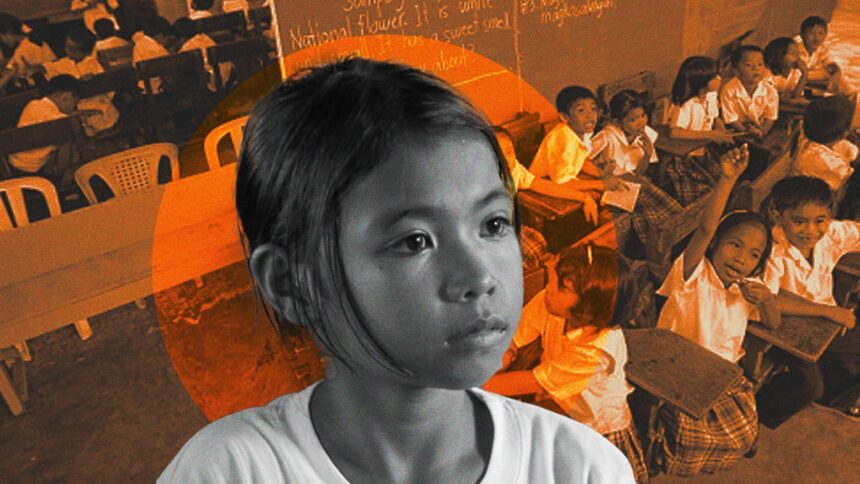With over 27 million students returning to school on June 16, 2025, the Department of Education (DepEd) is once again confronted by an alarming classroom shortage now pegged at approximately 165,000, according to Secretary Sonny Angara.
“We’re now at around 165,000 classroom shortage and growing kasi hindi na kakayanin nung current budget to meet the ano eh… It would take us 30 years, probably, if we work with the current budget,” he said.
(We’re now at around 165,000 classroom shortage and it’s still growing because the current budget can no longer cover the need… It would probably take us 30 years if we continue working with the current budget.)
From a 2024 report, the Second Congressional Commission on Education (EDCOM II) revealed a backlog of over 165,000 classrooms, while DepEd data showing that over 5.1 million students classified as “aisle learners” remain in overcrowded spaces, underscoring the slow pace of government response to the crisis
Classroom Backlog over the years: 2019-2025
| School Year | Classroom Shortage |
| 2019-2020 | 34,000 |
| 2022 | 91,000 |
| 2023 | 159,000 |
| 2024 | 165,443 |
| 2025 | Over 165,000 |
Shifting Solutions
To manage the lack of space, schools in regions such as Region 4-A and National Capital Region (NCR) resort to double and triple shifting to accommodate students’ needs due to the facility backlog.
Meanwhile, In Quezon City Districts 2 and 5, classroom construction remains incomplete, prompting the use of blended learning as a temporary solution.
In School Year 2023-2024, DepEd recorded schools in each region that implemented multiple shifts due to classroom shortages.
| Region | Double Shift | Triple Shift | Total |
| Region IV-A | 648 | 64 | 712 |
| NCR | 566 | 10 | 576 |
| Region VII | 211 | 27 | 238 |
| Region III | 196 | 14 | 210 |
| Region XI | 116 | 1 | 117 |
| Region VI | 90 | 3 | 93 |
| Region X | 73 | 3 | 76 |
| Region V | 57 | 12 | 69 |
| Region XIII | 41 | – | 41 |
| Region I | 24 | – | 24 |
| MIMAROPA | 12 | – | 12 |
| Region VIII | 13 | – | 13 |
| Region IX | 8 | – | 8 |
| CAR | 4 | – | 4 |
| Region II | 1 | – | 1 |
| BARMM | – | – | – |
Source: Department of Education
When Classrooms Lack the Basics
Nationwide, classroom shortage is compounded by an alarming lack of basic facilities, such as water supply, electricity, and hygienic restrooms.
A report from the Second Congressional Commission on Education (EDCOM 2) showed that around 1,500 public schools in the country still do not have electricity while 1,000 do not have toilets as of last school year.
Additionally, according to a report by the United Nations (UN) and United Nations Children’s Fund (UNICEF), 55% of schools lack access to a safely managed water supply and 26% lack safe sanitation.
Furthermore, based on the joint study of Philippine Institution for Development Studies (PIDS) and UNICEF: The Last-Mile Challenge: Water, Sanitation, and Hygiene (WASH) in the Philippines, more than half of Philippine schools fail to meet basic WASH standards, a shortfall correlated with high rates of diarrhea and other preventable illnesses among students that resulted to absenteeism and lower academic achievement.
Building the Gaps
To address this issue, under the 2025 General Appropriations Act (GAA) P28 billion was given to DepEd for the education facilities; this includes P7.8 billion for the construction of new school buildings nationwide.
This also includes the “Repair All Policy”, with a P6.13 billion budget for the rehabilitation, renovation, repair, and improvement of the school buildings.
Additionally, DepEd together with private partners through Public-Private Partnership (PPP) launched Generation HOPE.
This partnership includes BDO, Carmen’s Best, Grab, Penshoppe, The Aivee Clinic, SM Supermalls, and Sunnies.
“If we want to inspire the nation to nation-build through education, we have to do it with the big brands. It’s not going to happen with small brands,” HOPE founder Nanette Gwen Medved said.
On the other hand, DepEd Assistant Secretary for Operations Jocelyn Andaya emphasized that Brigada Eskwela initiatives have helped improve conditions through classroom repairs and repainting through volunteers, LGUs, and private sector partners.
Angara stated in an interview with GMA Network that these given budgets would help in solving the problem. “Malaking bagay ‘to kasi nga diba nabawasan kami ng budget nitong 2025 so ito, makakatulong do’n sa kakulangan natin sa classrooms.”
(This is a big deal because, as you know, our budget for 2025 was reduced, so this will help address our shortage of classrooms.)








